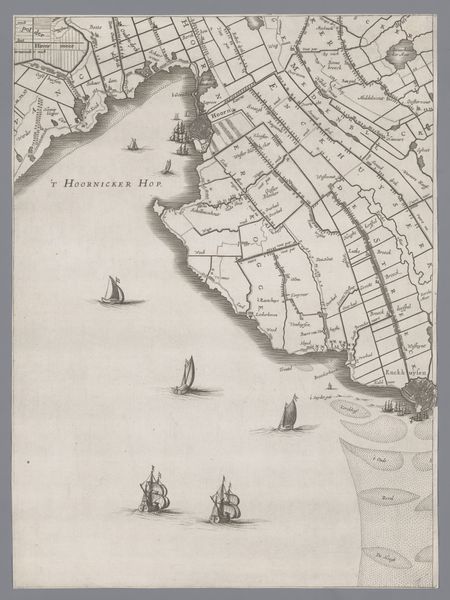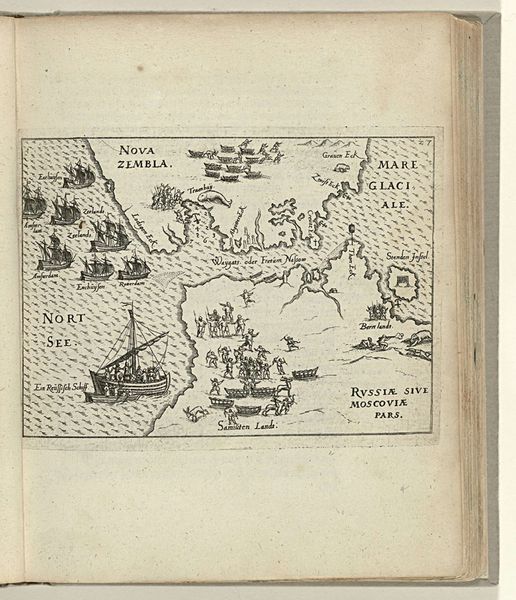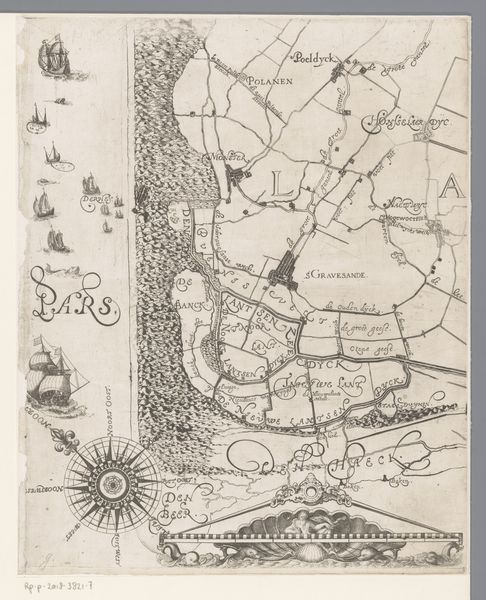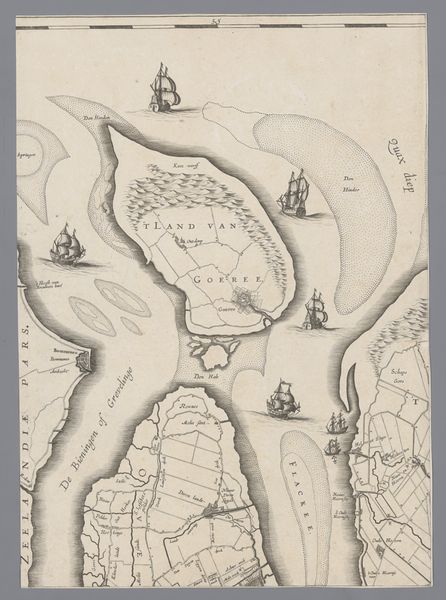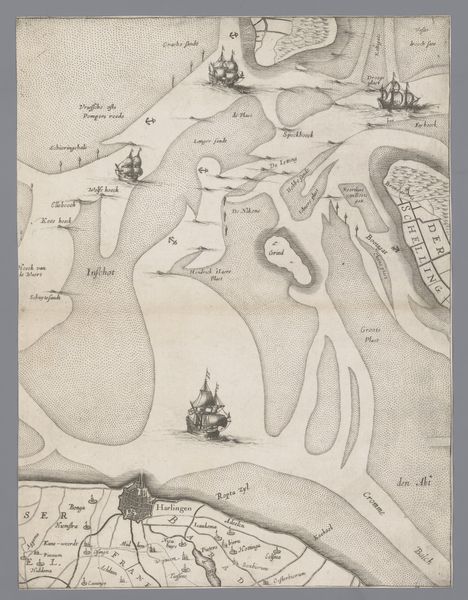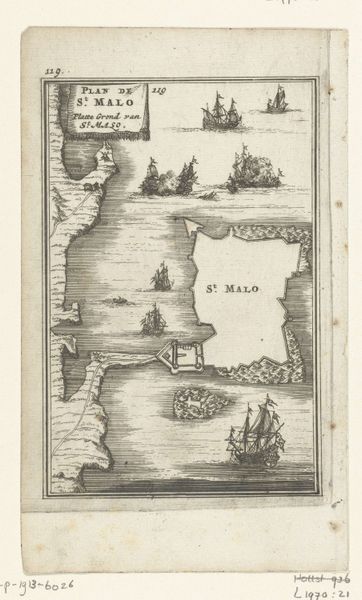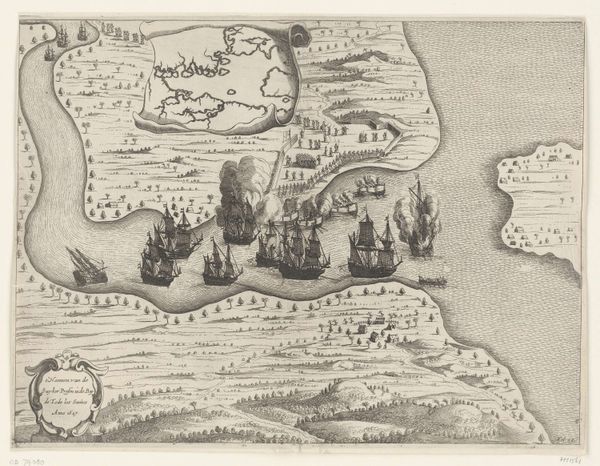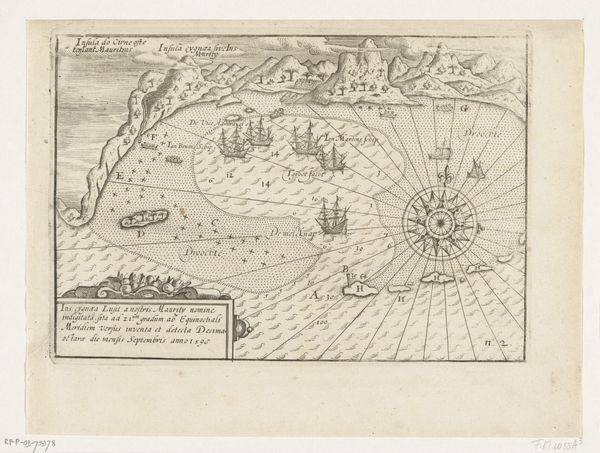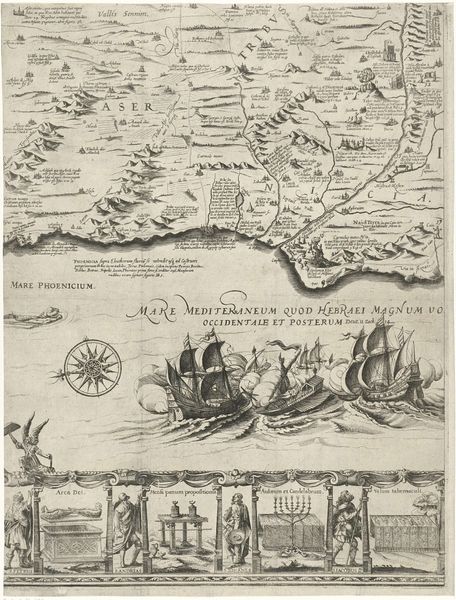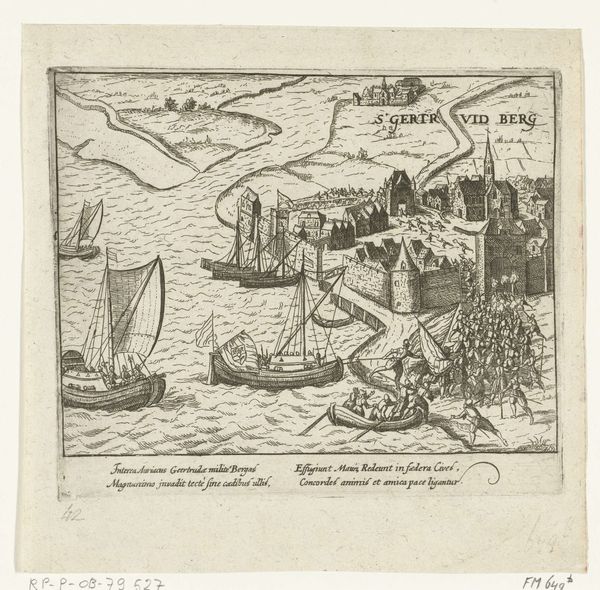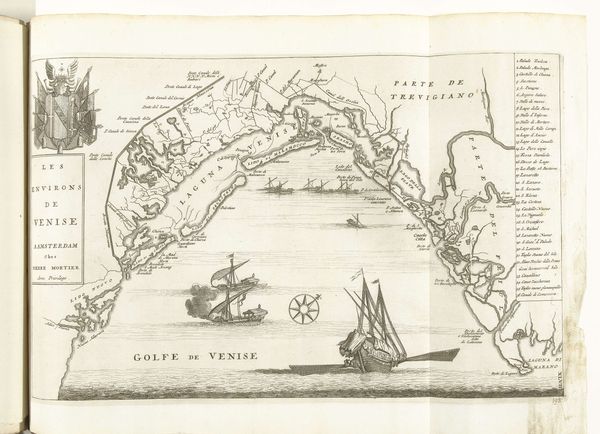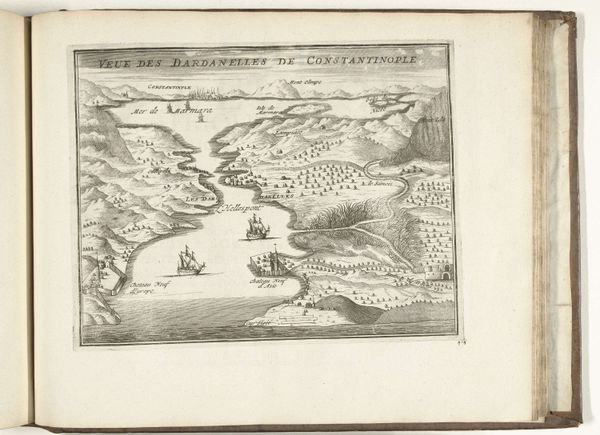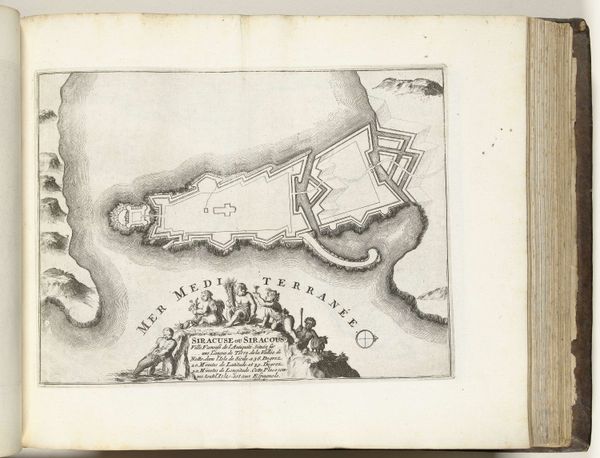
print, engraving
#
dutch-golden-age
# print
#
landscape
#
geometric
#
cityscape
#
engraving
Dimensions: height 405 mm, width 297 mm
Copyright: Rijks Museum: Open Domain
Curator: Here we have Jacob Aertsz Colom's "Kaart van het Graafschap Holland en Utrecht," an engraving dating back to 1639. I always think of these old maps as landscape art of a particularly informative type! Editor: My first impression is how much negative space there is. All that sea! It almost dwarfs the landmass itself. Gives you a sense of the vastness of the water. Curator: Absolutely. And that's quite intentional, I believe. Water was both a life-giver and a threat. Notice how strategically placed those ships are; each vessel more than just a detail— they’re like active guardians, markers of trade, exploration and a nation’s ambition sailing outward. Editor: Yes, the ships caught my eye too. They’re like symbols themselves— miniatures, but they tell a larger story of Dutch maritime power during that Golden Age. But even beyond nationalistic pride, I can almost feel the ocean’s pull; like I’m invited to imagine what it might be to sail into that nothingness and become just a little speck on that vast plain. It evokes feelings of curiosity and longing... almost like melancholy. Curator: I understand that; but maybe it also speaks to the known, delineated world versus the mysteries just beyond it. That shoreline represents control, civilization… but even this close-to-home maritime space still contains unseen, "monstrous" potential in the collective imagination of that era. So, the composition strikes that perfect balance between familiar shores and the tantalizing unknown. I think people felt a thrill of simultaneous fear and attraction for the oceans represented here. Editor: Interesting… a delicate balance struck on a single sheet! And the choice of engraving, that line work—so precise, so ordered. Does it attempt to mirror control over a wilder domain, or merely aspire toward a level of order nature itself will resist in its chaos? Curator: Possibly a bit of both. Printmaking helped disseminate a new type of visual culture to the Dutch people at all economic levels of society, an aesthetic informed and even defined by scientific, cartographic observation in the 17th Century. A society bent on knowing, delineating its world in an era of transformation! It also subtly projects an almost wistful air of nostalgia... for simpler views on nature itself? Editor: Ultimately this image is quite fascinating and the history palpable. I'd happily get lost wandering over those tiny script notations while imagining the possibilities, real or invented. Curator: Agreed. Every line carries echoes of history and ambition—art disguised as practicality.
Comments
No comments
Be the first to comment and join the conversation on the ultimate creative platform.
